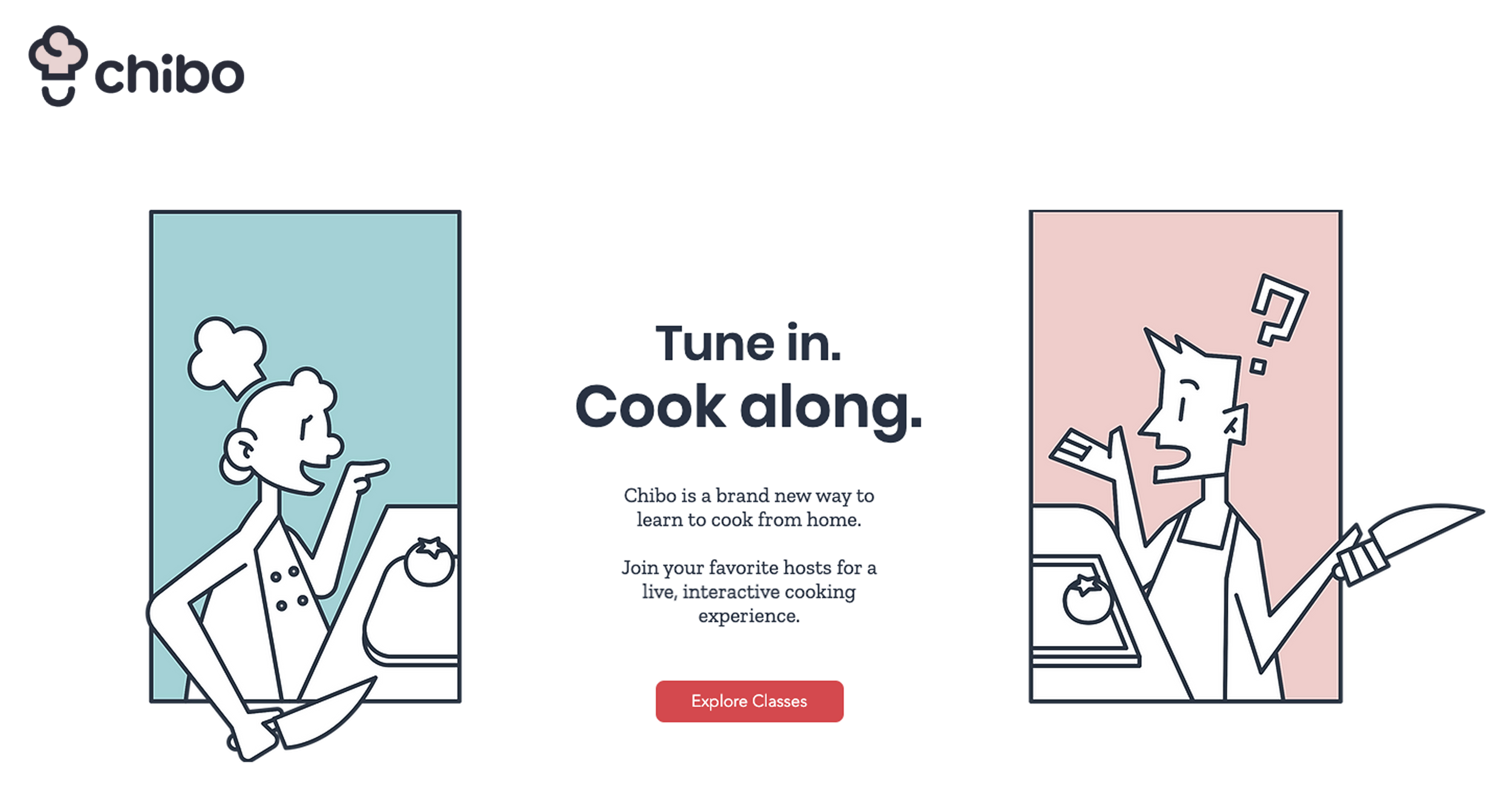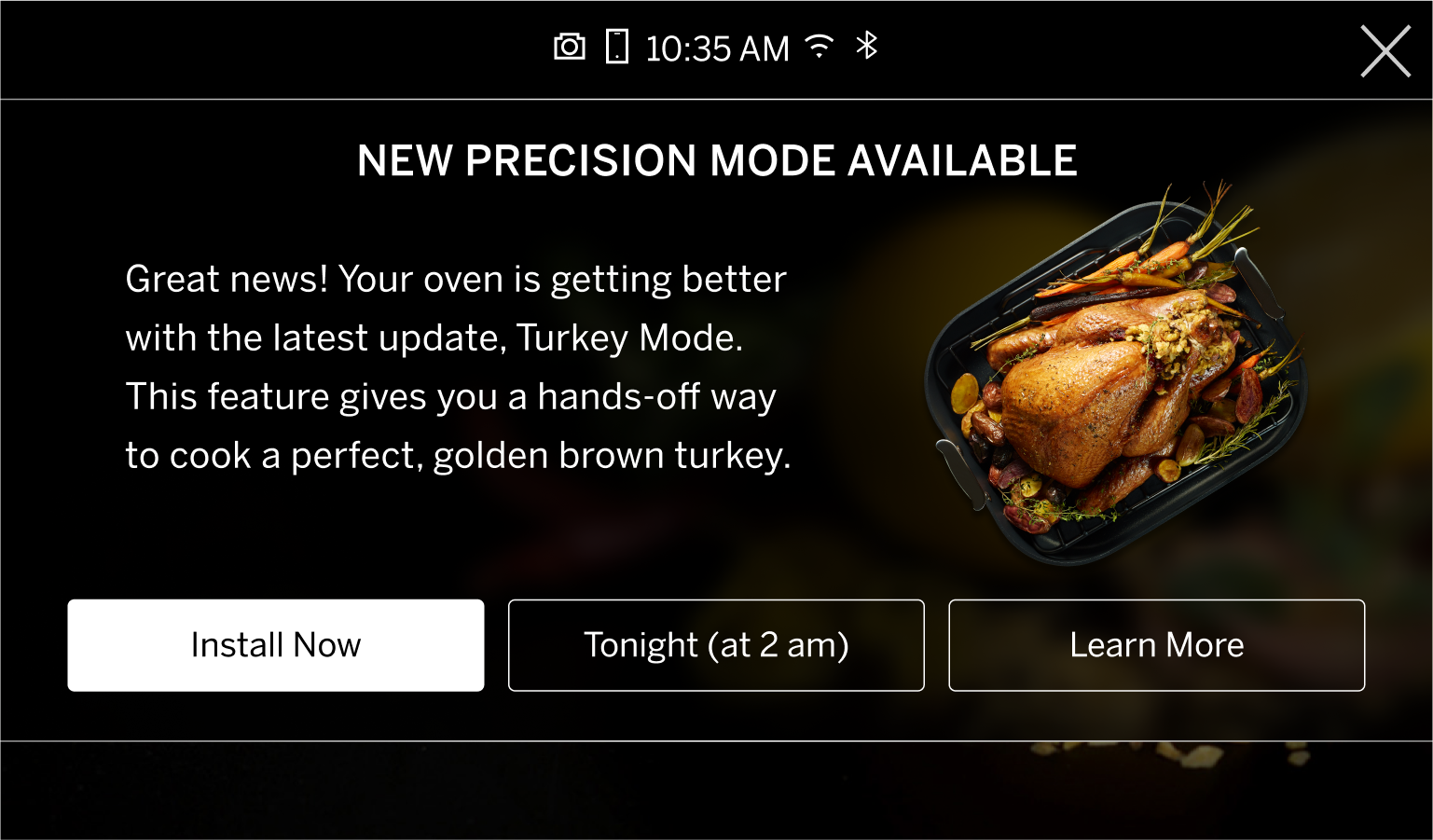Background
With the successful launch of the AirFry cooking mode in GE Appliances’ Profile and Cafe ovens and ranges, I was chosen to lead the cooking mode experience of the new Over the Air (OTA) updates to our premier cooking appliances. Executive leadership gave my team the mandate to roll out new software features monthly with a new cooking mode provided every quarter. Our ultimate goal was to increase market share within the upper quartile of the market and to position GE Appliances as the leader in cooking innovation.
Strategy
The strategy of the OTA teams was focused on two outcomes:
- Drive adoption of new features through the regular release of new features and modes that would make cooking easier and more approachable
- Increase sales and revenue of our connected cooking products through long-term ownership value
Execution
In order to reach the desired business outcomes, I developed a UX strategy that would ensure the launched modes solved real consumer problems, were discoverable within our UI and were as simple as possible to use.
I led an ideation session with cooking and software engineers, UI designers and food scientists to begin creating new OTA updates. We identified cooking modes and software features that we could simplify with the existing cooking technologies within our ovens and ranges. There were a total of 102 SKUs that would be able to receive OTA cooking updates. The technology that we could use to deliver the updated modes included:
- Convection fans - direct and indirect
- In oven camera
- Temperature probe
- Broil
- Proof
The team came up with a list of possible cook modes and then we rated these on level of difficulty for the home chef, available technology within the cooking appliance, software controls available and marketability. With those constraints, the team outlined and prioritized our first 12 months of cooking modes:
- Steak mode
- Pizza mode
- Turkey mode
- Dehydrate mode
Developing a New Cooking Mode
The initial steps to discovering the viability of the cooking mode were very manual. Steak mode had to be simple enough that anyone, regardless of cooking experience could make their ideal steak with just a few taps and minimal effort. As we began a new cooking mode, we would map out various methods and recipes that delivered an ideal outcome. For our steak mode, this involved biweekly controlled cooking sessions, testing various bake, broil and convection methods. Temperature probes were used to closely measure doneness and cook time from cold oven to complete doneness. We quickly developed our initial cooking steps and the engineers developed a firmware build to run the weekly testing sessions. The steak cooking process was prototyped as a two-stage bake; a slow, low temperature cook called reverse searing and then a high temperature broil to sear. We also had to manage the variability of cuts of steak, steak thickness and consumer cooking expertise.
As the process for cooking was being developed, our lead UI designer and I met regularly to review his design flows and navigation mapping. We worked to map out the multi-stage baking steps and I provided direction for instruction, clarity and UI animation. One of the challenges the UI needed to solve was a clear, step by step instruction to our home chefs and a visual progress indicator to build confidence that the steak was properly cooking. The UI patterns developed for our touch-screen products incorporated a circular visual for baking. We adapted that visual to include the cooking step, meat temperature, and progress indicator around the main circular element in the UI during the slow cooking process.
Test & Validation
With the cooking method prototyped, I then spearheaded a round of quantitative research to validate our progress. At this point, we were about 5 weeks into the project and needed confidence that our consumers would understand the steps involved and that the outcome, the cooked steak, would be at an acceptable quality. I developed our recruiting screener to source local home chefs with a variety of steak cooking experience. I collaborated with our consumer insights team to have them moderate the in-person research. At this stage, the cooking mode was only available if driven from a laptop connected via USB. The UI build was still in design. I had the designer deliver a Figma prototype and, using a phone as the interface screen, quickly adapted our development model to accommodate the phone and recruited our cooking engineer to facilitate the cooking software during the test. I also coordinated the space and logistics of getting our prototyped oven to our external testing location. I wanted to drive greater confidence that the mode we’d developed would satisfy our consumer’s expectations.
The research was conducted with 10 people, 60% male and 40% female. The outcomes of the initial research gave us these key insights:
- Steak is an expensive meal and people are afraid that they might ruin it
- The levels of doneness: rare, medium rare, etc., are well known, but 85% of our participants expressed confusion when testing for doneness. We needed some way to communicate doneness levels visually in the UI.
- The steps we had developed in the UI needed some slight adjustment, mostly instruction
- Resting the meat after cooking delivered a better result and would need to be incorporated into the UI
Outcome
The final release of steak mode was launched and delivered via OTA update to over 15,000 units, starting first with the touchscreen enabled products and then staggering a release to over 100,000 units via mobile app. The response of the update was overwhelmingly positive, delivering a strong marketing lift during the July sales cycle. The feature received strong reviews from product owners and became a featured cooking mode on all the cooking product pages.
This release was followed in the next quarter (Q3) timed to launch just a couple of weeks before Thanksgiving in the United States. While a different mode than steak mode, this followed a very similar development cycle that we were able to repeat over the course of the releases. These connected cooking modes have become a central selling point for all the premiere cooking products for GE Profile and Cafe ranges and wall ovens.
Chibo



